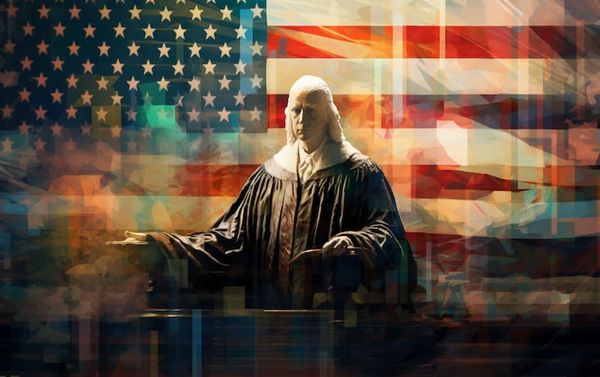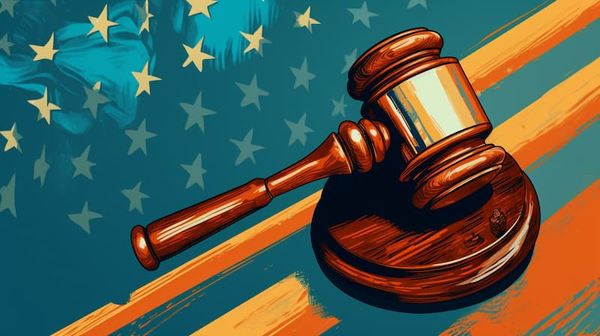A World Where AI and Creativity Collide
Artificial intelligence (AI) has been making waves in various industries, including the creative realm. As AI-generated content becomes more sophisticated, the question of copyrightability arises.
The U.S. Copyright Office recently released a document titled "Copyright Registration Guidance: Works Containing Material Generated by Artificial Intelligence," explaining their view on the copyrightability of AI Generated artwork.
Previous to this there were two noteworthy events that took place:
- Copyright Protection Approved in September 2022: On September 15, 2022, the US copyright registration was approved for the manga "Zarya of the Dawn" created by New York artist Kristina Kashtanova using Midjourney, an AI image generation service.
- Copyright Protection for "Zarya of the Dawn" Revised: But on Feb 22 the Copyright Office changed it's stance. The Copyright Office stated that the author of "Zarya of the Dawn," Kristina Kashtanova, is entitled to a copyright for the parts of the book she wrote and arranged, but not for images she created using Midjourney.

In a series of tweets, Michael Eshaghian, Esq., an intellectual property attorney, breaks down the U.S. Copyright Office's (CO) stance on the matter. In this article, we'll analyze and expand on Eshaghian's points, providing you with a comprehensive understanding of the copyright landscape for AI-generated works.
AI-generated Works: Human Creativity as the Key to Copyright
According to Eshaghian's tweets, the CO asserts that only works born from human creativity are eligible for copyright protection. Works created by non-humans, such as monkeys and spiritual beings, have been deemed non-copyrightable by the courts. This means that AI-generated works must possess a significant degree of human involvement to be considered copyrightable.
Determining Copyrightability: A Process for Evaluating AI-generated Content
The CO has developed a process for determining whether AI-generated content qualifies for copyright protection. It examines whether the work is essentially a product of human authorship, with the computer or AI serving as an assisting tool, or whether the traditional elements of authorship were conceived and executed by the machine.
The CO differentiates between mechanical reproduction, which is not copyrightable, and the result of the author's original mental conception given visible form, which is copyrightable. The critical question is whether the AI's contributions stem from mechanical reproduction or the author's original thoughts.
Understanding the Difference: Mechanical Reproduction vs. Original Mental Conception
Mechanical reproduction refers to the AI's automatic generation of content without human input or creative control. In contrast, original mental conception implies that the human author played a crucial role in shaping the final output. To be copyrightable, the AI-generated work must reflect the human author's creative vision and not merely be a product of the AI's autonomous actions.
No Copyright Protection for AI-generated Works with Minimal Human Input
Eshaghian points out that when a human provides only a prompt, and the AI generates complex written, visual, or musical works in response, the resulting work cannot be copyrighted. In this case, the user does not exercise ultimate creative control over how the AI interprets the prompt, rendering the output ineligible for copyright protection.
Three Potential Paths to Copyrightability for AI-generated Works
The CO identifies three scenarios in which AI-generated works could be eligible for copyright protection:
- Sufficient Human Authorship: If the AI-generated work contains a substantial degree of human authorship, it could qualify for copyright protection. However, the term "sufficient" remains undefined and open to interpretation.
- Creative Selection or Arrangement: If a human selects or arranges AI-generated material in a creative manner, resulting in a new, original work, it could be copyrightable. An example of this scenario is the case of "Zarya of the Dawn," where a human's creative arrangement of AI-generated content led to a copyrightable work.
- Significant Human Modification: If a human modifies AI-generated material to a considerable extent, the resulting work may meet the standards for copyright protection. In this case, only the human-authored aspects of the work would be protectable.
The Role of Technology in Creativity and Copyright
The CO acknowledges that technology has long played a role in artists' creative processes, citing examples like Photoshop and guitar pedals. The crux of the matter is the extent to which the human exerts creative control over the work's expression and actually forms the traditional elements of authorship.
Guidance for Copyright Applicants: Five Essential Points
Eshaghian highlights five points of guidance for applicants seeking copyright protection for AI-generated works:
- Disclosure and Explanation: Applicants should disclose any AI-generated content in their work and provide an explanation of the human author's contributions.
- No AI Co-authors: Applicants should not list the AI or the company providing the AI as a co-author.
- Exclusion of AI-generated Content: Any AI-generated content that constitutes more than a minimal contribution to the work must be explicitly excluded from the copyright application.
- Review of Pending Applications: Applicants should review their pending applications for adherence to these requirements. If necessary, they should contact the CO's Public Information Office and report any omissions or inaccuracies.
- Supplementary Registrations for Existing Registrations: For applications that have already resulted in a registration, applicants should submit a supplementary registration to correct any errors. Failure to do so could result in the cancellation of the original registration.
Conclusion: Navigating the Complex World of AI-generated Content and Copyright
The intersection of AI-generated content and copyright protection is a rapidly evolving area of law. As AI continues to advance, it is crucial for creators and users of AI-generated content to stay informed about the U.S. Copyright Office's guidelines and requirements. By understanding the nuances of human authorship and the role of AI in the creative process, individuals can better navigate the complexities of copyright law and protect their original creations.
To dive deeper into the U.S. Copyright Office's stance on AI-generated content, you can read the full document here.








